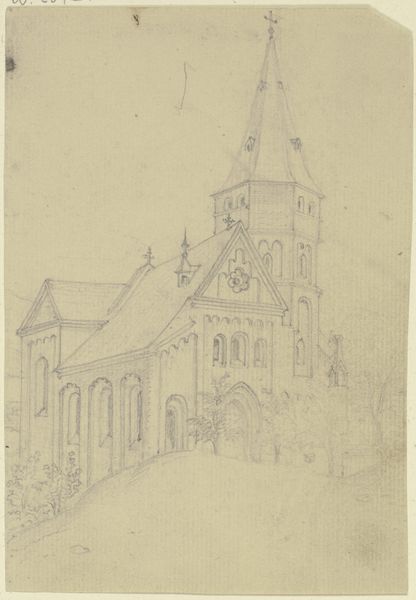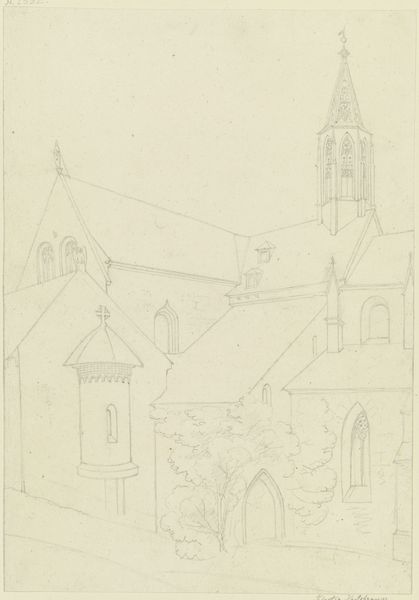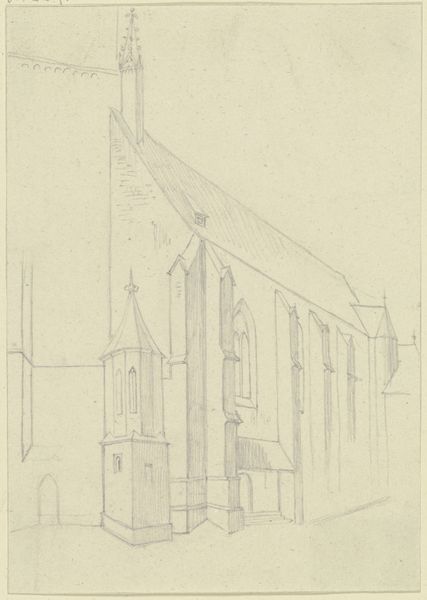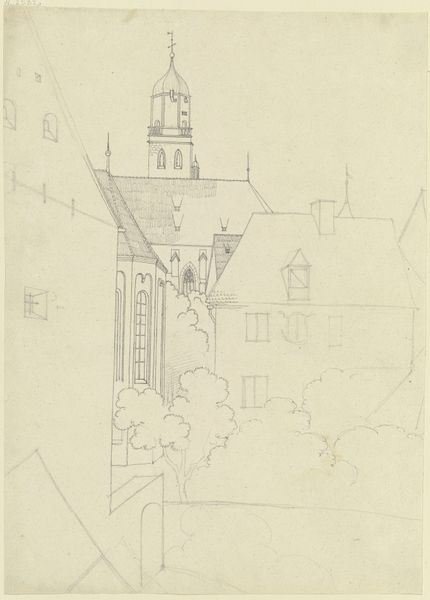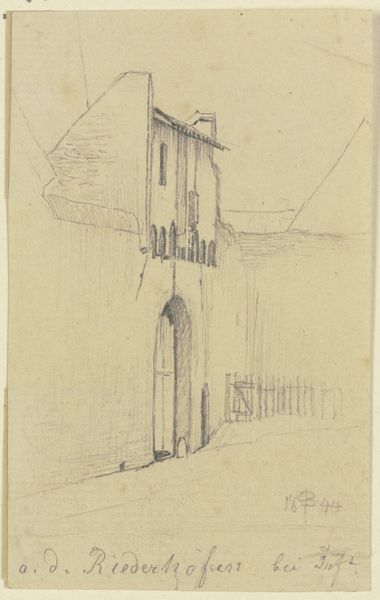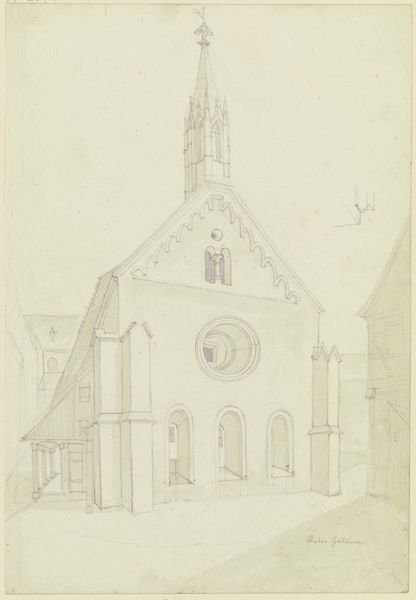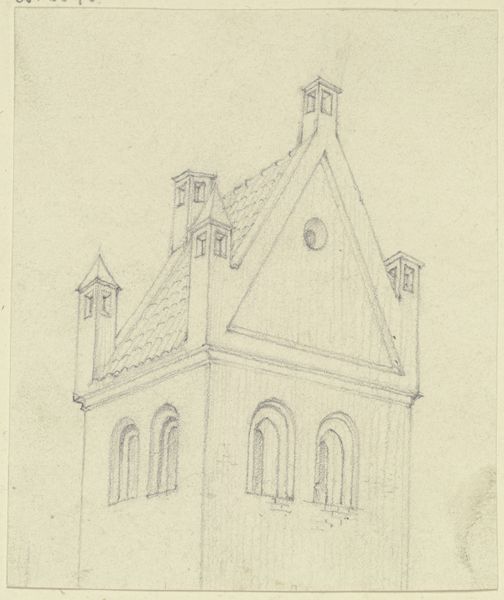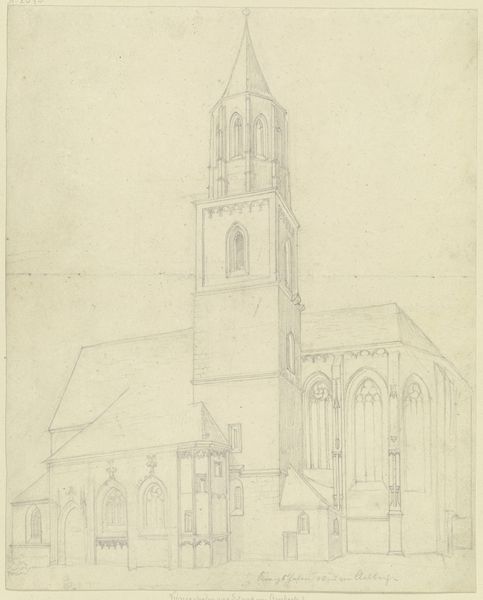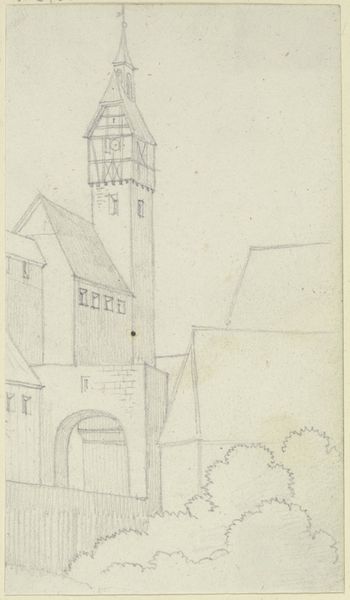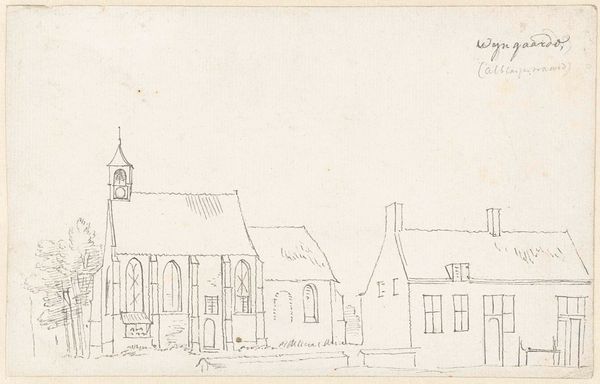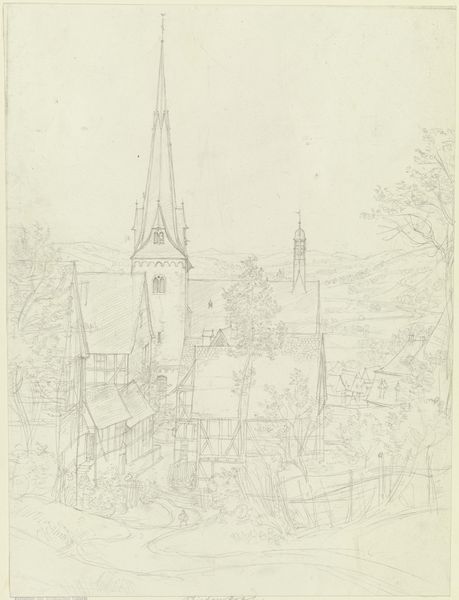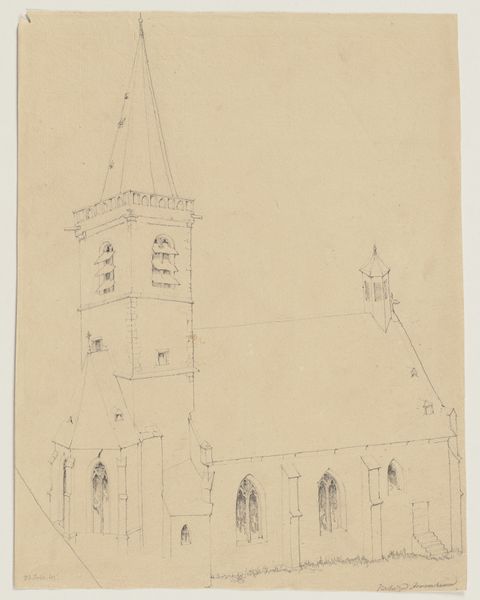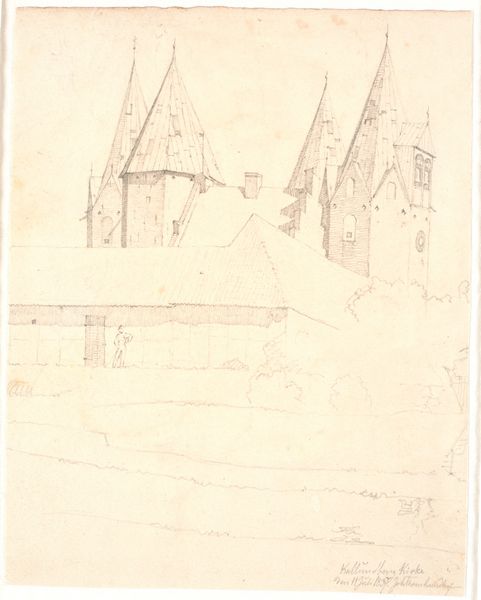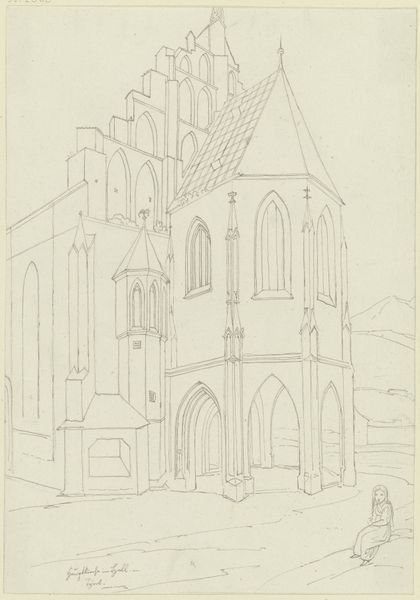
Vorhalle des Klosters Herrenalb im Albtal (Original Title) 6 - 1849
0:00
0:00
Copyright: Public Domain
Curator: This delicate rendering captures the "Vorhalle des Klosters Herrenalb im Albtal," or entrance hall of Herrenalb Abbey, situated in the Albtal valley. Friedrich Wilhelm Ludwig created this pencil and etching drawing in May of 1849. Editor: It's wonderfully muted, isn't it? Almost ghostly, with a bare tree reaching towards the sky and those rows of shadowed arches leading into what seems like infinite space. Curator: Absolutely. The stark lines and monochrome palette reflect the period's Romantic sensibility and the renewed interest in Medieval architecture, but also in connecting to nature and one’s national or regional heritage. The Herrenalb Abbey itself experienced secularization not long before Ludwig drew this image, highlighting complex relationships between church and state in the mid-19th century. Editor: I’m curious about the Abbey’s role as a visual representation of German cultural identity after experiencing French occupation and upheaval in the wake of the Napoleonic Wars. Does it act as a way for Ludwig and his audience to access a kind of stable past? Curator: It certainly seems possible to read the work that way, yes. During this period, the representation of religious institutions, like Herrenalb Abbey, functioned beyond just depicting their aesthetic form. The imagery evokes nostalgic narratives concerning national history and shared community values at a time when those elements faced significant societal flux. Ludwig's technique also calls for consideration; notice the precision of his lines contrasting with sketch-like strokes that define the exterior, lending the image a dreamlike feel. Editor: A tension between presence and absence that really resonates. Is it solid and real, or simply a half-remembered vision of what was? How interesting that this entrance is foregrounded: an invitation perhaps? Or a guarded threshold we cannot cross? Curator: Perhaps Ludwig seeks to remind his viewers about cultural continuity through careful documentation during a period defined by revolutionary spirit. I’m moved by this etching that transcends architectural depiction—revealing, too, our human longing for place and heritage. Editor: Indeed, this drawing resonates with deeper meditations concerning preservation and memorialization of communal spaces, so central for identity politics even today.
Comments
No comments
Be the first to comment and join the conversation on the ultimate creative platform.
